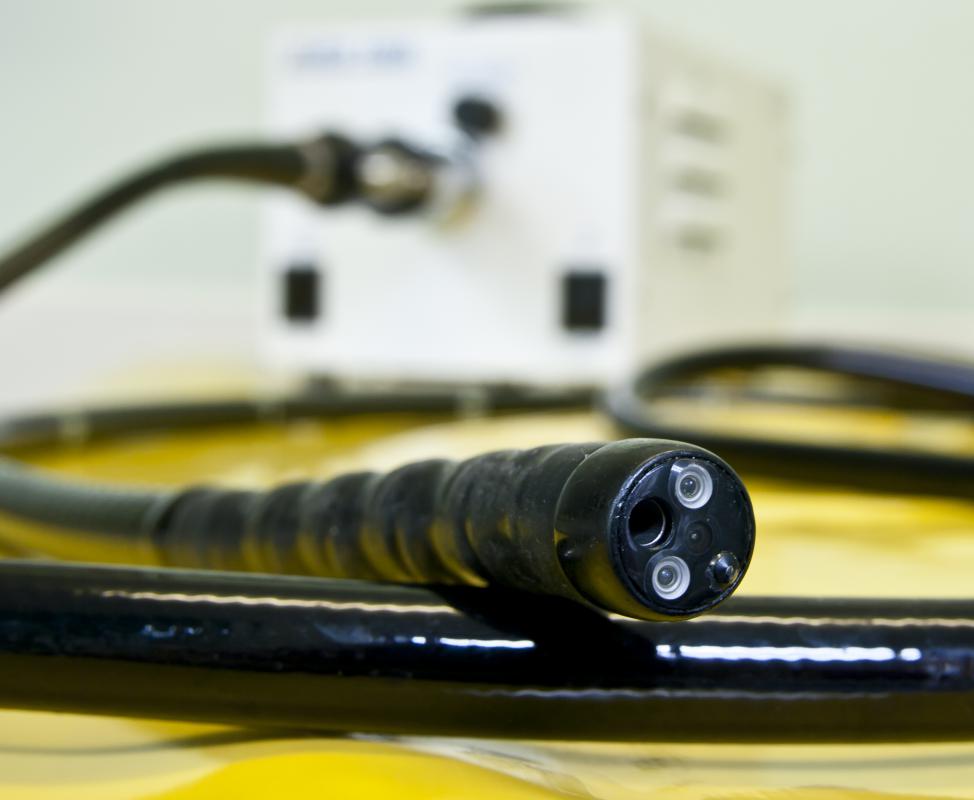At TheHealthBoard, we're committed to delivering accurate, trustworthy information. Our expert-authored content is rigorously fact-checked and sourced from credible authorities. Discover how we uphold the highest standards in providing you with reliable knowledge.
What are the Different Methods of Lesion Removal?
The method of lesion removal depends on many factors, such as where the lesion is located and whether or not it's dangerous. Lesions are almost always removed surgically, but some are better left in place because of the dangers posed by their removal, such as with some brain lesions. Many lesions are also temporary and heal on their own or with the help of oral or topical medication. If it's decided that a lesion should be removed for safety or because the patient wants it removed for cosmetic reasons, then the location will determine the exact type of surgery required.
One of the most common types of lesions is skin lesions, which are also called cutaneous lesions. Skin lesion removal is usually an outpatient procedure and can sometimes be done right in a doctor's office if the lesion isn't cancerous or suspicious. Lidocaine or other numbing agent is usually injected around the spot before removal. The lesion typically is then either burned off, which is far less common today than it used to be, or excised with a scalpel in a procedure called a shave excision.

For skin lesion surgery when there's the threat of cancer or cancer is known to be present, an outpatient procedure in a hospital might be necessary. The lesion first is numbed with one or more injections before it's excised. When there's concern about cancer, the layer of skin directly beneath the lesion may also be removed. This is called elliptical excision and is a deeper cut than one made with shave excision. This type of surgery helps to make sure that any cancer cells in the skin beneath the lesion are also detected.

The removed portion normally is tested to check for cancer cells in both the lesion and the normal skin so further treatment can be determined. If the normal skin shows the presence of cancer cells, another deeper excision might be performed. Other methods of treatment, such as radiation, chemotherapy or drug therapy, might also be necessary.
Lesions also can appear other places in the body besides the skin. Colon lesions, for example, are common and are typically detected through a colonoscopy. These lesions are typically removed surgically when they're found in order to reduce the risk of cancer.

Some brain lesions can be removed surgically, while others might be in a part of the brain that make the surgery too risky. The chief reason for brain lesion removal is the fear that the lesion is or will become cancerous. When removal is too risky, lesions often are treated with radiation or chemotherapy to help kill cancer cells.
Liver lesions may also be removed surgically to prevent cancer from forming or spreading. A lesion can appear on almost any surface inside or outside the body, and whether or not lesion removal is an option depends on the degree of risk the procedure carries and whether or not there's a risk of cancer.

Some other common types of lesions, such as herpes lesions and AIDS lesions, can heal on their own or with medication. Herpes lesions can include cold sores on and around the mouth or genital area. AIDS lesions can appear anywhere on the skin and are used by doctors to judge the progression of the disease. Lesions found in herpes, AIDS and other illnesses that affect the immune system aren't typically candidates for lesion removal because they come and go during different stages of the illnesses.
AS FEATURED ON:
AS FEATURED ON:















Discussion Comments
I think lasers are pretty safe. They are used for many kinds of medical procedures, and skin lesion removal is relatively simple compared to many other surgeries. However, I know someone who had laser surgery and the doctor told her the laser could trigger any viruses she had in her body, so they were very thorough with the medical history report.
The article says that burning the lesions off is not as common as it once was. This makes me think that either doctors have found a better way to treat the lesions, or there were too many complaints from patients who had skin lesion removal where the lesions were burned off.
I'm afraid of lasers anyway. They just seem dangerous, and they might burn more than the doctor intended to burn off. And this might cause changes in my skin coloring or scars.
@mobilian33 - Yes, lasers are used to remove skin lesions in some cases. However, you shouldn't be fooled into thinking that the laser skin lesion removal is going to be a cake walk compared to a removal surgery that uses a scalpel.
I have had laser surgery and you should expect a significant amount of pain and some redness. How much pain and redness will probably depend on how deep the lesion is and where it is located. After my laser surgery, I had to take several days of vacation time while I healed, and I wasn't able to do much moving about because of the discomfort.
This article says the lesions can be burned off. Does this mean they are burned off with a laser? I think the laser skin lesion removal would be much simpler and less painful than having the lesion scraped off with a scalpel.
Post your comments